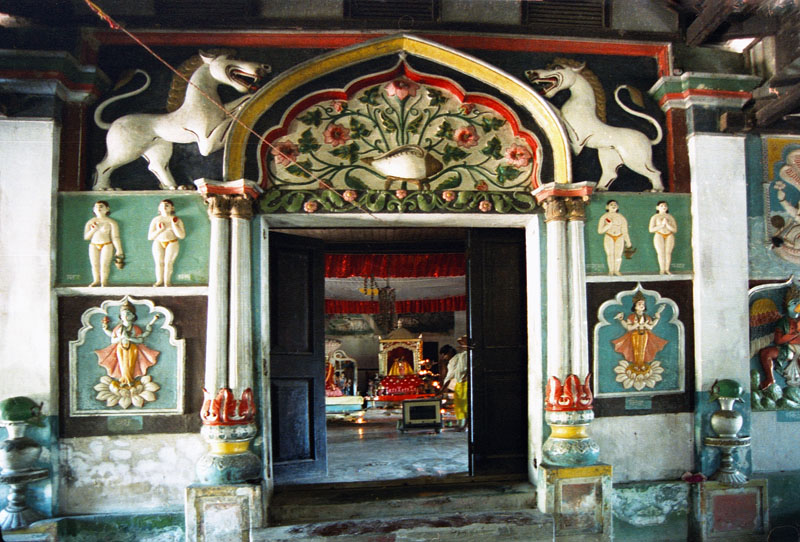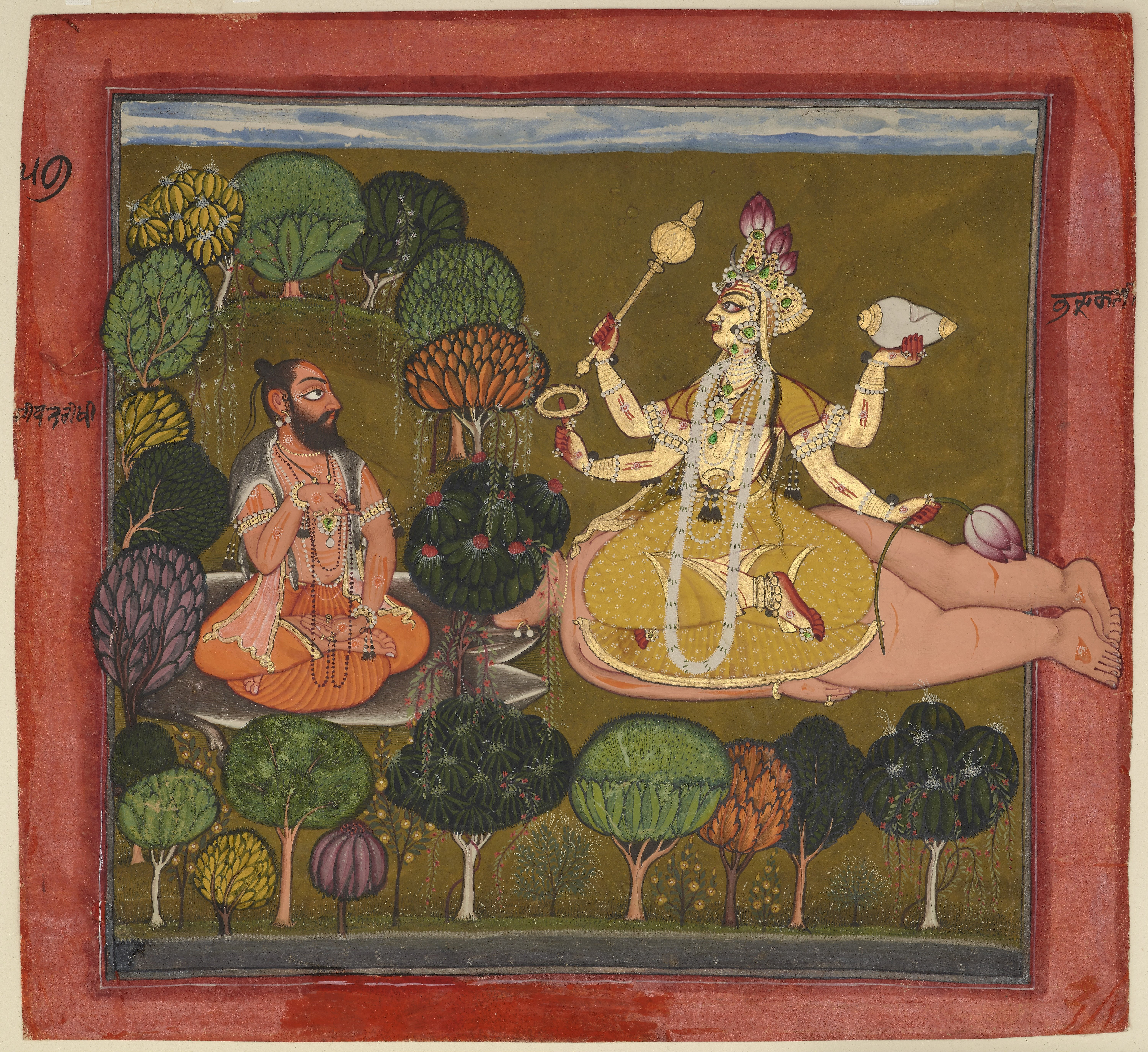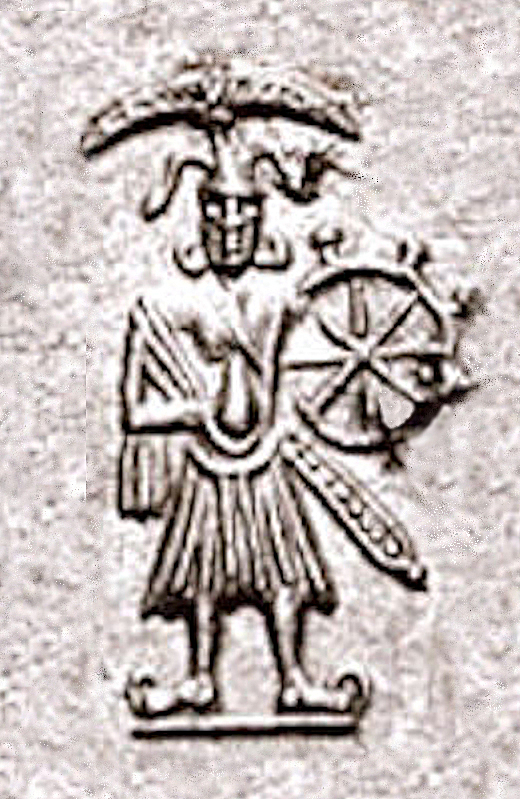|
Mamoni Raisom Goswami
Indira Goswami (14 November 1942 – 29 November 2011), known by her pen name Mamoni Raisom Goswami and popularly as Mamoni Baideo, was an Indian writer, poet, professor, scholar and editor. She was the winner of the Sahitya Akademi Award (1983), the Jnanpith Award (2000) and Principal Prince Claus Laureate (2008). A celebrated writer of contemporary Indian literature, many of her works have been translated into English from her native Assamese which include '' The Moth Eaten Howdah of the Tusker'', '' Pages Stained With Blood'' and '' The Man from Chinnamasta''. She was also well known for her attempts to structure social change, both through her writings and through her role as mediator between the armed militant group United Liberation Front of Asom and the Government of India. Her involvement led to the formation of the People's Consultative Group, a peace committee. She referred to herself as an "observer" of the peace process rather than as a mediator or initiator. Her ... [...More Info...] [...Related Items...] OR: [Wikipedia] [Google] [Baidu] [Amazon] |
:Template:Infobox Writer/doc
Infobox writer may be used to summarize information about a person who is a writer/author (includes screenwriters). If the writer-specific fields here are not needed, consider using the more general ; other infoboxes there can be found in :People and person infobox templates. This template may also be used as a module (or sub-template) of ; see WikiProject Infoboxes/embed for guidance on such usage. Syntax The infobox may be added by pasting the template as shown below into an article. All fields are optional. Any unused parameter names can be left blank or omitted. Parameters Please remove any parameters from an article's infobox that are unlikely to be used. All parameters are optional. Unless otherwise specified, if a parameter has multiple values, they should be comma-separated using the template: : which produces: : , language= If any of the individual values contain commas already, add to use semi-colons as separators: : which produces: : , pseu ... [...More Info...] [...Related Items...] OR: [Wikipedia] [Google] [Baidu] [Amazon] |
Assamese Language
Assamese () or Asamiya ( ) is an Indo-Aryan language spoken mainly in the north-eastern Indian state of Assam, where it is an official language. It has long served as a ''lingua franca'' in parts of Northeast India."Axomiya is the major language spoken in Assam, and serves almost as a lingua franca among the different speech communities in the whole area." It has over 15 million native speakers and 8.3 million second language, second language speakers according to ''Ethnologue''. Nefamese, an Assamese-based pidgin in Arunachal Pradesh, was used as a lingua franca till it was replaced by Hindi language, Hindi; and Nagamese Creole, Nagamese, an Assamese-based Creole language, continues to be widely used in Nagaland. The Kamtapuri language of Rangpur division of Bangladesh and the Cooch Behar district, Cooch Behar and Jalpaiguri district, Jalpaiguri districts of India is linguistically closer to Assamese, though the speakers identify with the Bengali culture and the literary lan ... [...More Info...] [...Related Items...] OR: [Wikipedia] [Google] [Baidu] [Amazon] |
Handique Girls College
Handique Girls College is a constituent college of the University of Gauhati. It is one of the oldest colleges located in the Indian state of Assam and offers undergraduate courses in Arts and Science. History The college has its roots initially as Panbazar Girls' High school. Subsequently, the Handique Girls College was established in 1939 as the Guwahati Girls College. Mrs Rajabala Das was the founder principal of the college. The college was initially located in the Panbazar area of the city. With the shifting to the present site in 1940, the college was renamed Handique Girls College (in honour of noted philanthropist R. K. Handique), and became affiliated to the University of Calcutta. The college later become affiliated to the University of Gauhati following its establishment in 1948. College principals The college has had eleven principals: Campus The college is situated on the western bank of the Dighalipukhuri in Guwahati. The present campus is spread over two acr ... [...More Info...] [...Related Items...] OR: [Wikipedia] [Google] [Baidu] [Amazon] |
Ekasarana Dharma
''Ekasarana Dharma'' () is a Vaishnavism#Later medieval period, Vaishnavite religion propagated by Srimanta Sankardeva in the 15th-16th century in the Indian state of Assam. It reduced focus on Vedic ritualism and focuses on devotion (''bhakti'') to Krishna in the form of congregational listening (''shravan'') and singing his name and deeds (''Kirtan Ghoxa, kirtan''). The simple and accessible religion attracted both Hindu and non-Hindu populations into its egalitarian fold. The neophytes continue to be inducted into the faith via an initiation ceremony called ''xoron-lowa'' (literally: take-shelter), usually conducted by ''Sattradhikars'', heads of monastic institutions called Sattras, who generally draw apostolic lineage from Sankardev. Some Sattradhikars, especially those from the Brahma-sanghati, reject apostolic lineage from Sankardev due to an early schism with the order. Some modern reformation institutions conduct ''xoron-lowa'' outside the ''sattra'' institution. In ... [...More Info...] [...Related Items...] OR: [Wikipedia] [Google] [Baidu] [Amazon] |
Sattra
''Satra'' are institutional centers associated with the '' Ekasarana'' tradition of Vaishnavism, largely found in the Indian state of Assam and neighboring regions. Numbering in the hundreds, these centers are generally independent of each other and under the control of individual ''adhikara'' (or ''satradhikar''), though they can be grouped into four different ''Sanghati'' (orders). These centers, in the minimum, maintain a prayer house ('' Namghar'', or '' Kirtan-ghar''), initiate lay people into the ''Ekasarana'' tradition and include them as disciples of the ''satra'' from whom taxes and other religious duties are extracted. The Vaishnavite satra culture started in the 16th century. They grew rapidly in the 17th century and patronage extended to them by first the Koch kingdom and later the Ahom kingdom was crucial in the spread of the Ekasarana religion. Many of the larger Satras house hundreds of celibate and non-celibate ''bhakat'' (monks), hold vast lands and are rep ... [...More Info...] [...Related Items...] OR: [Wikipedia] [Google] [Baidu] [Amazon] |
Brahmin
Brahmin (; ) is a ''Varna (Hinduism), varna'' (theoretical social classes) within Hindu society. The other three varnas are the ''Kshatriya'' (rulers and warriors), ''Vaishya'' (traders, merchants, and farmers), and ''Shudra'' (labourers). The traditional occupation of Brahmins is that of priesthood (purohit, pandit, or pujari) at Hindu temples or at socio-religious ceremonies, and the performing of rite of passage rituals, such as solemnising a wedding with hymns and prayers.James Lochtefeld (2002), Brahmin, The Illustrated Encyclopedia of Hinduism, Vol. 1: A–M, Rosen Publishing, , page 125 Traditionally, Brahmins are accorded the supreme ritual status of the four social classes, and they also served as spiritual teachers (guru or acharya). In practice, Indian texts suggest that some Brahmins historically also became agriculturalists, warriors, traders, and had also held other occupations in the Indian subcontinent.GS Ghurye (1969), Caste and Race in India, Popular Prakasha ... [...More Info...] [...Related Items...] OR: [Wikipedia] [Google] [Baidu] [Amazon] |
Vaishnavism
Vaishnavism () ), also called Vishnuism, is one of the major Hindu denominations, Hindu traditions, that considers Vishnu as the sole Para Brahman, supreme being leading all other Hindu deities, that is, ''Mahavishnu''. It is one of the major Hindu denominations along with Shaivism, Shaktism, and Smartism. Its followers are called Vaishnavites or ''Vaishnava''s (), and it includes sub-sects like Krishnaism and Ramanandi Sampradaya, Ramaism, which consider Krishna and Rama as the supreme beings respectively. According to a 2020 estimate by The World Religion Database (WRD), hosted at Boston University’s Institute on Culture, Religion and World Affairs (CURA), Vaishnavism is the largest Hindu sect, constituting about 399 million Hindus. The ancient emergence of Vaishnavism is unclear, and broadly hypothesized as a History of Hinduism, fusion of various regional non-Vedic religions with worship of Vishnu. It is considered a merger of several popular non-Vedic theistic traditio ... [...More Info...] [...Related Items...] OR: [Wikipedia] [Google] [Baidu] [Amazon] |
Mukti Chairman Mr
Mukti () is the concept of spiritual liberation (Moksha or Nirvana) in Indian religions, including jivan mukti, para mukti. Mukti may also refer to: Film * ''Mukti'' (1937 film), a Hindi- and Bengali-language Indian film * ''Mukti'' (1960 film), an Indian film starring Nalini Jaywant * ''Mukti Asm'', a 1973 Assamese-language film, to which the Indian classical singer Parveen Sultana contributed a song * ''Mukti'' (1977 film), a Hindi-language Indian film * ''Mukti'' (Oriya film), a 1977 Odia-language Indian film that won the Odisha State Film Award for Best Actress * ''Mukthi'', a 1988 Indian film * ''Mukti'' (TV series), a 2022 Indian Bengali-language web series People * Mukti Ali (1923–2004), Indonesian government minister * Mukti Mohan (born 1987), Indian dancer and actress * Mukti (actress), actress in the 2002 Bengali-language Bangladeshi film ''Hason Raja'' * Mukti Ali Raja, Indonesian footballer in the 2012 Liga Indonesia Premier Division Final * Mukti Bahadur ... [...More Info...] [...Related Items...] OR: [Wikipedia] [Google] [Baidu] [Amazon] |
Jahnu Barua
Jahnu Barua (born 1952) is an Indian film director. He has written and directed a number of Assamese language, Assamese and Hindi films. Some of his notable films are ''Halodhia Choraye Baodhan Khai'' (1987), ''Firingoti'' (1992), ''Xagoroloi Bohudoor, Xagoroloi Bohu Door'' (1995), ''Maine Gandhi Ko Nahin Mara, Maine Gandhi Ko Nahi Mara'' (2005), ''Konikar Ramdhenu'' (2003), ''Baandhon'' (2012), and ''Ajeyo'' (2014). Jahnu Barua has been conferred Padma Shri (2003) and Padma Bhushan (2015). He served as chairman of the Indian Film Directors' Association in 1993. Filmography Television * ''Adhikar'' (Right, 1988) * ''Ek Kahani'' (One Story, 1986) * ''Paatal Lok, Paatal Lok (season 2)'' (2025) actor Politics The Raijor Dal officially announced that Jahnu Baruah had extended his support along with Assamese film actress Zerifa Wahid and lawyer Arup Borbora. Awards Jahnu Baruah has received the following awards: * Padma Shri in 2003 * Padma Bhushan in 2015 National Film Aw ... [...More Info...] [...Related Items...] OR: [Wikipedia] [Google] [Baidu] [Amazon] |
Adajya
''Adajya'' () is a 1996 Indian Assamese language drama film directed by Santwana Bardoloi based on the novel '' Dontal Haatir Uiye Khowa Haoda'' by Indira Goswami. The film was screened at several international film festivals. Plot The film is set in 1940s Assam. Three widows struggle to lead dignified lives despite the extreme restrictions mandated by law and custom. The arrival of a young American scholar, a poisonous snakebite, and the theft of ancestral jewelry combine to bring the situation of the young and beautiful widow Giribala to a painful crisis. Cast *Tom Alter as Mark Sahib *Trisha Saikia as Giribala * Bishnu Kharghoria *Triveni Bora *Bhagirothi *Nilu Chakrabarty *Chetana Das *Indira Das *Mintu Barua Awards ;44th National Film Awards * Best Feature Film in Assamese * Best Cinematography – Mrinalkanti Das (also for ''Rag Birag'') * National Film Award – Special Mention – Bhagirothi (also for Dolon Roy for ''Sanghat'') ;International Film Festival of India T ... [...More Info...] [...Related Items...] OR: [Wikipedia] [Google] [Baidu] [Amazon] |
People's Consultative Group
The People's Consultative Group (PCG) was a citizen's group in Assam, India, comprising 11 members and established by the United Liberation Front of Assam (ULFA) on September 8, 2005. Its objective was to initiate the peace talk process as mediator between the Government of India, central government and ULFA. The PCG was dissolved by ULFA chairman Arabinda Rajkhowa in February 2011. ULFA continued the peace talk process without the PCG on 10 February 2011 in New Delhi. Members The following is a list of PCG members released by ULFA chairman Arabinda Rajkhowa. Mamoni Raisom Goswami was appointed as the chief Interlocutor (politics), interlocutor between ULFA and the government. Some of its members are believed to be ULFA sympathizers or ex-ULFA cadres. #Mamoni Raisom Goswami (Jnanpith Awardee writer) #Reboti Phukan (Former footballer and childhood friend of Paresh Baruah) #Arup Borborah (Lawyer) #Lachit Bordoloi (Manab Adhikar Sangram Samiti, MASS leader) #Mukul Mahanta (Enginee ... [...More Info...] [...Related Items...] OR: [Wikipedia] [Google] [Baidu] [Amazon] |



